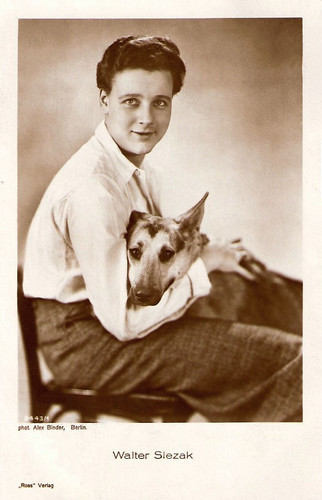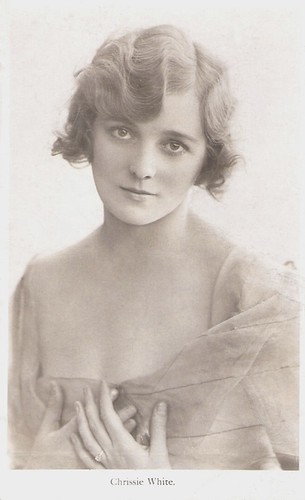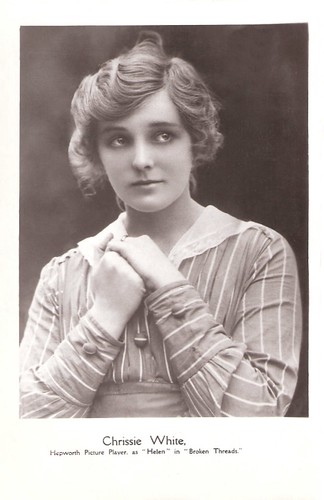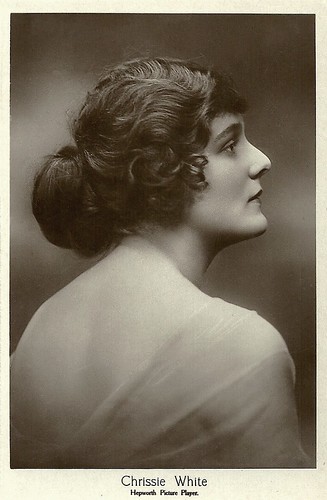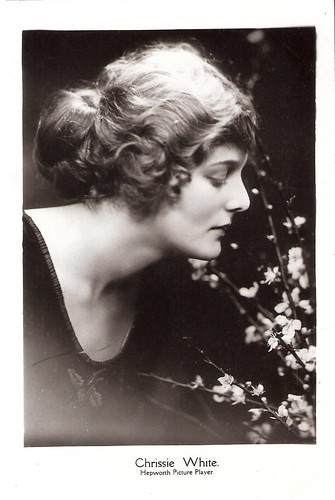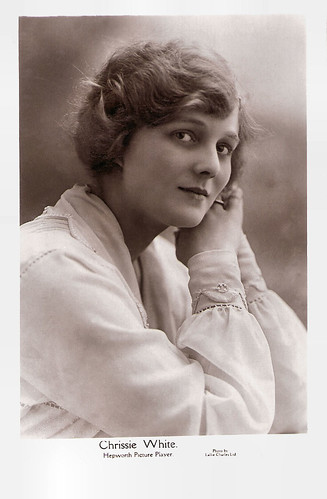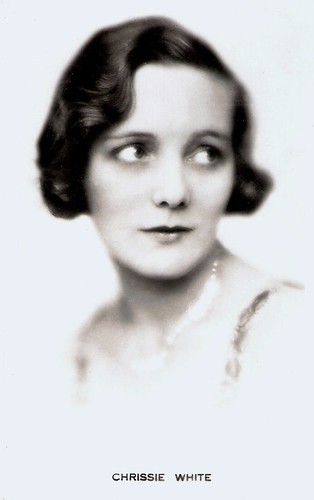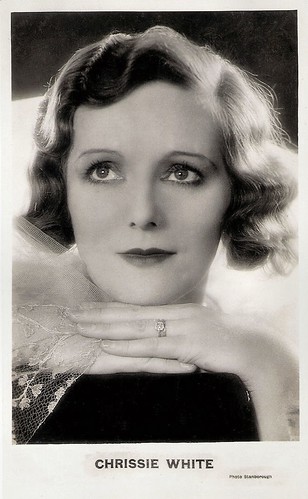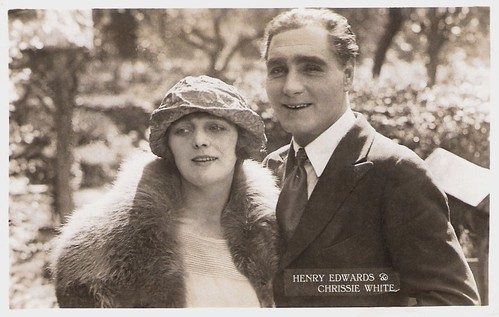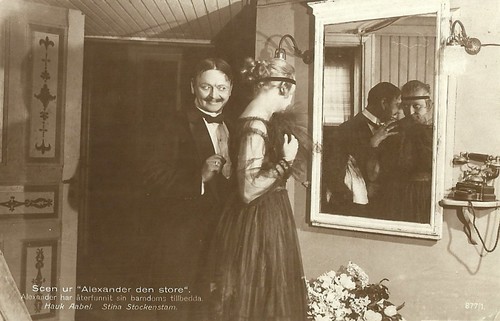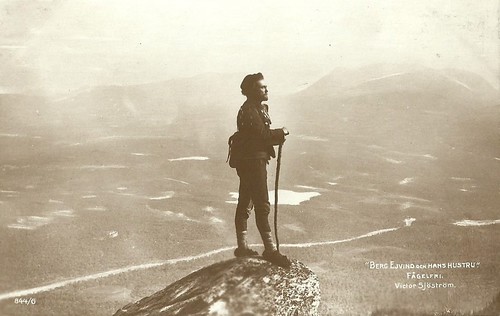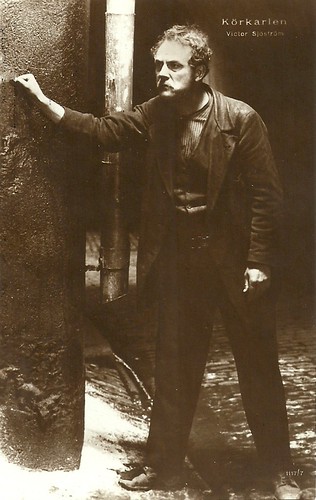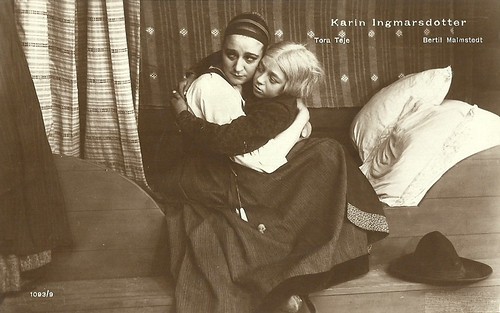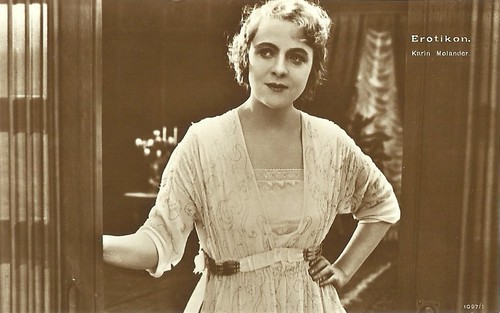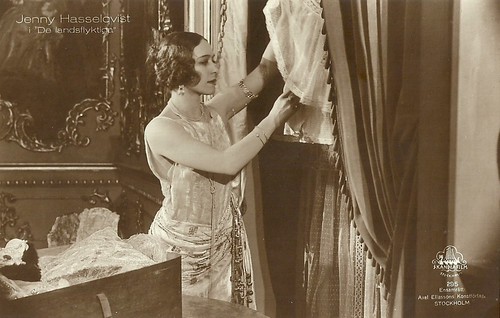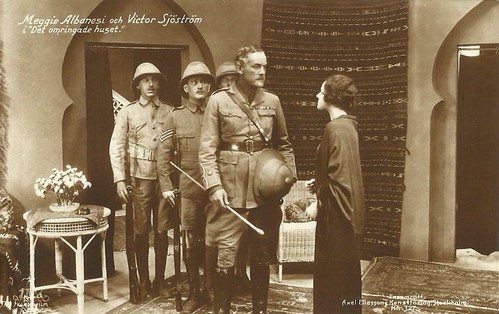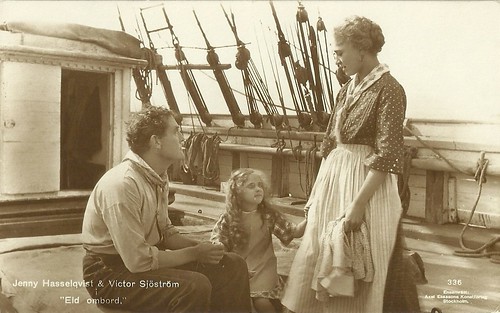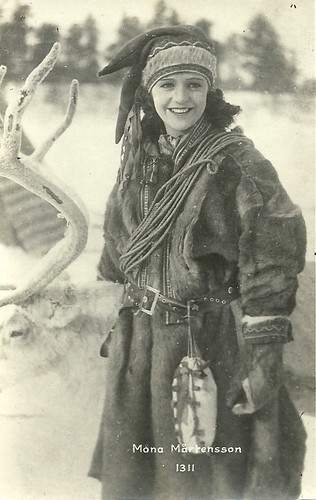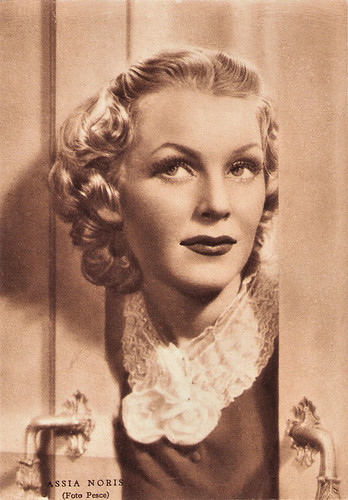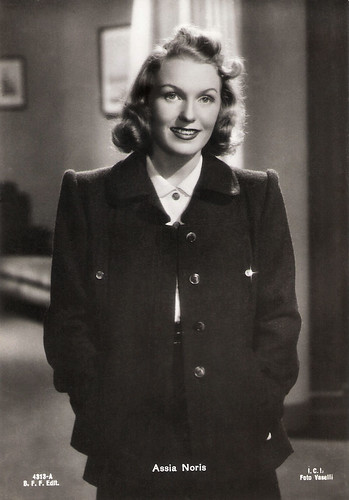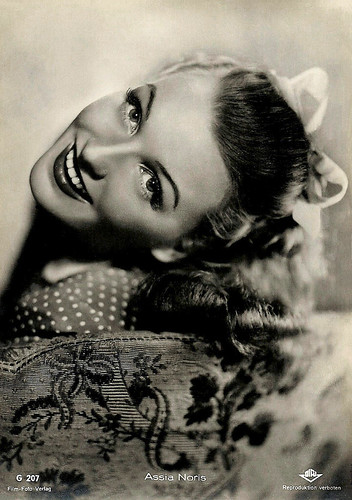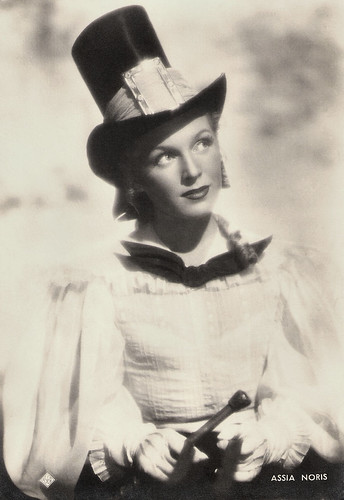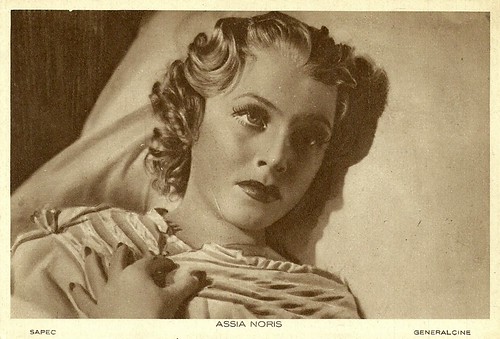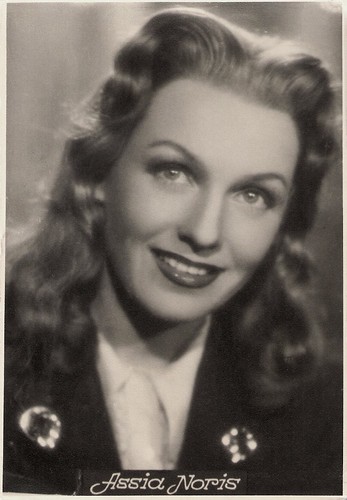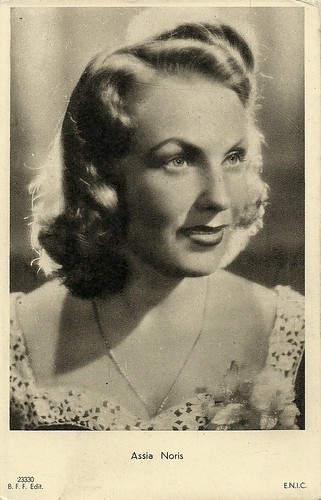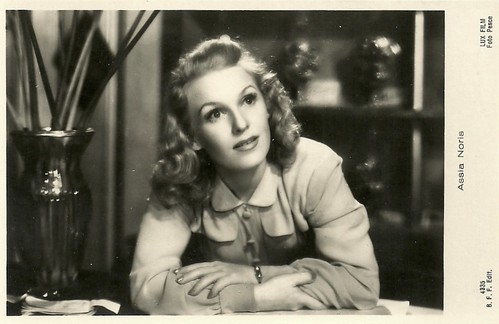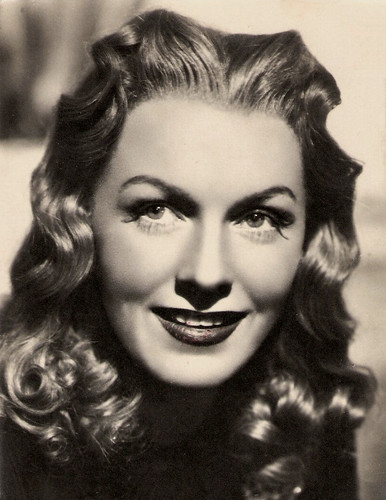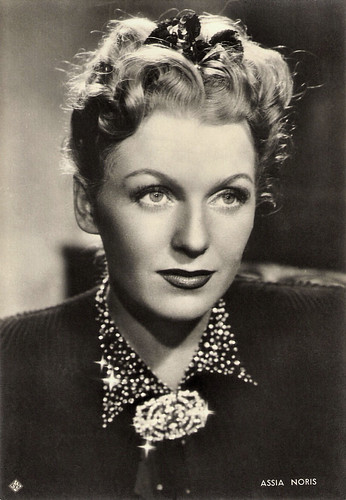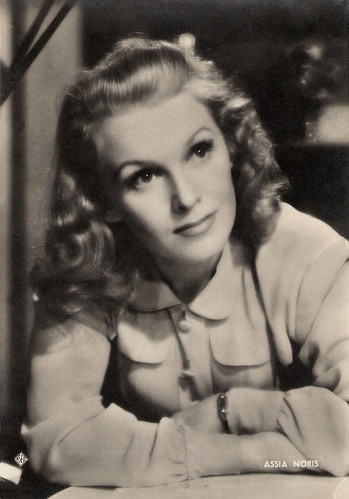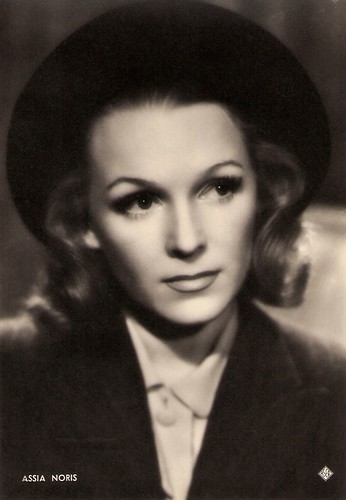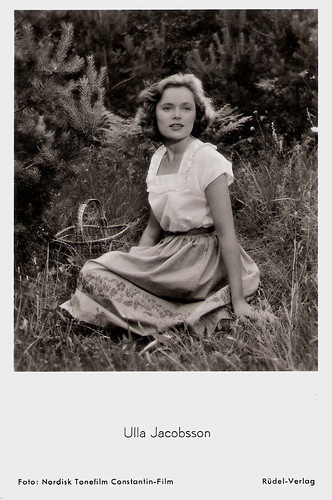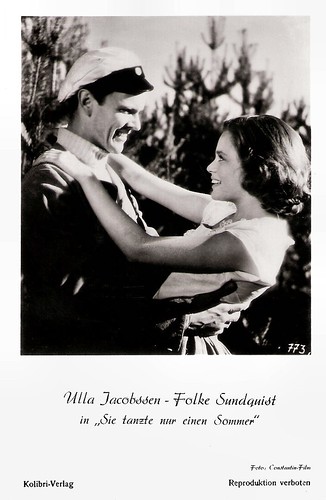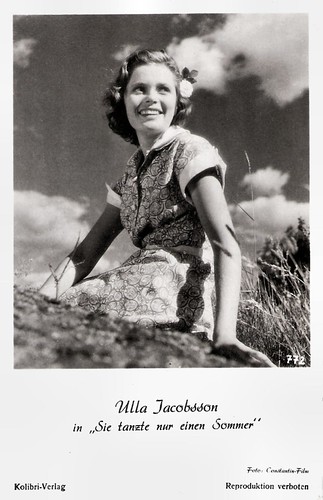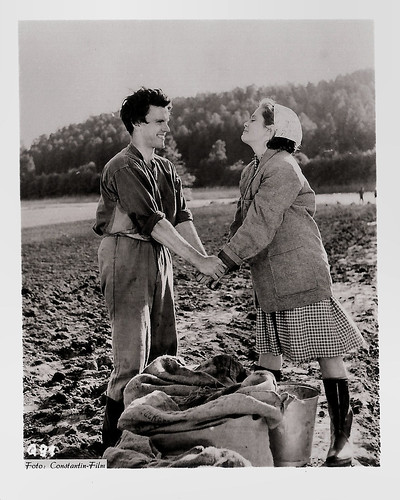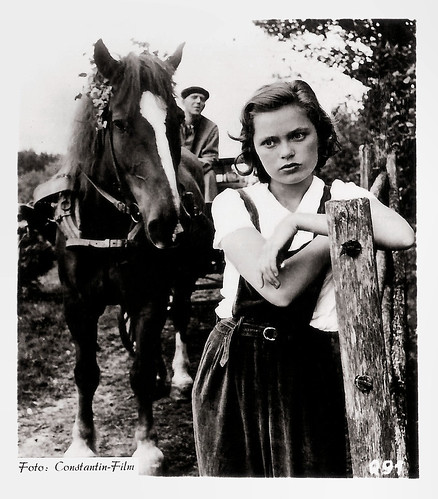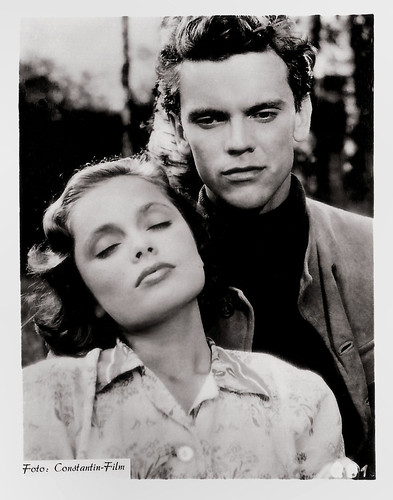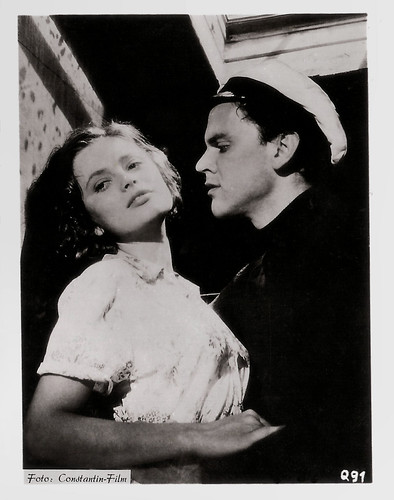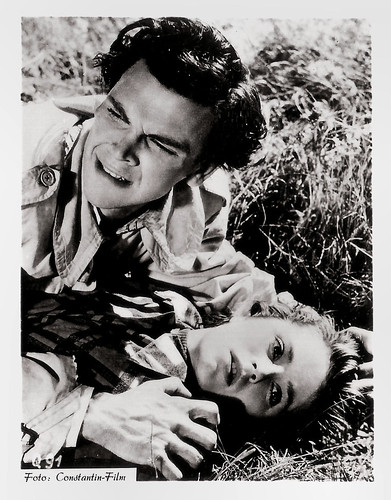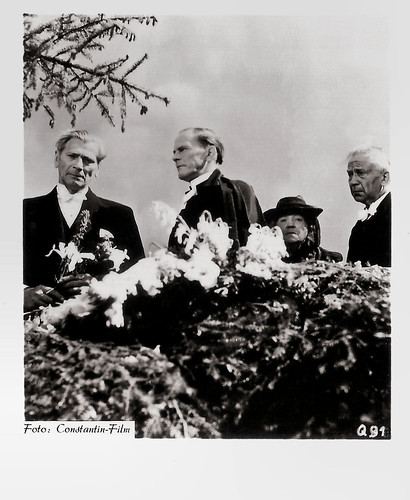Handsome actor Werner Pittschau (1902-1928) was the promising jeune premier of the silent Austrian cinema. Sadly he was killed in a road accident at the age of 26.
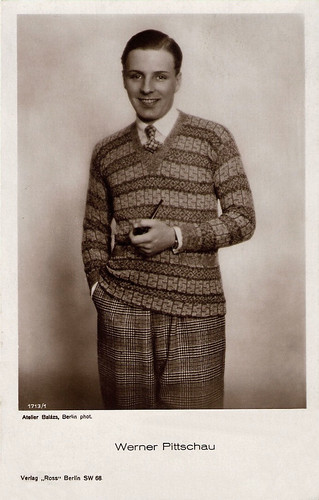
German postcard by Ross Verlag, no. 1713/1, 1927-1928 (sent by mail in the Netherlands in 1929). Photo: Atelier Balázs, Berlin.
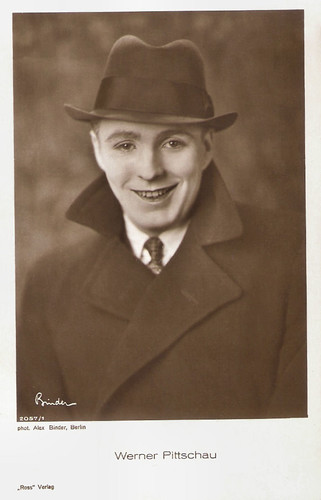
German postcard by Ross Verlag, no. 2057/1, 1927-1928. Photo: Alex Binder, Berlin.
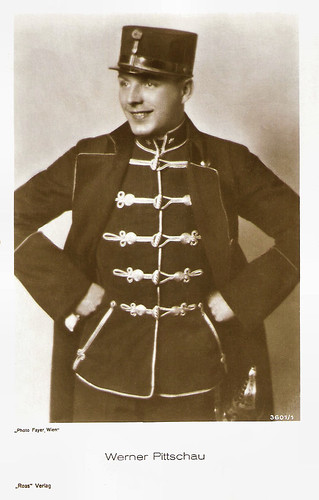
German postcard by Ross Verlag, no. 3601/1, 1928-1929. Photo: Fayer, Wien.
Werner Pittschau was the son of Austrian stage actor Ernst Pittschau and stage actress Hilda Pittschau-Hofer née Schützenhofer. His older stepbrother Ernst Pittschau was a well-known film actor.
After his school education Werner went to a cadet school to become an officer. When the political situation in Austria changed he chose for a commercial education.
But the acting bug was inside him and he got his first engagement at the Landestheater in Prague as a jeune premier. There he was spotted by Erika Glässner and Hans Junkermann who brought him to the cinema.
He made his film début in the German film Der krasse Fuchs/The Cool Fox (Conrad Wiene, 1925) with Hans Brausewetter.
To his other early films belong Die Anne-Liese von Dessau (James Bauer, 1925) with Valy Arnheim, the war drama Volk in Not/Nation in Distress (Wolfgang Neff, 1925) with Claire Rommer, Die letzte Droschke von Berlin/The Last Taxi of Berlin (Carl Boese, 1926) and the German-British co-production Die versunkene Flotte/When Fleet Meets Fleet: A Romance of the Great Battle of Jutland (Graham Hewett, Manfred Noa, 1926), starring Hans Albers and Nils Asther.
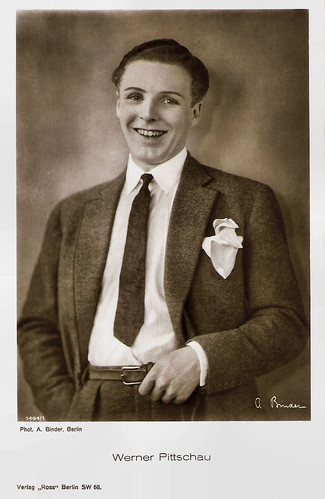
German postcard by Ross Verlag, no. 1494/1, 1927-1928. Photo: Alex Binder, Berlin.

German postcard by Ross Verlag, no. 1627/1, 1927-1928. Photo: Alex Binder, Berlin.
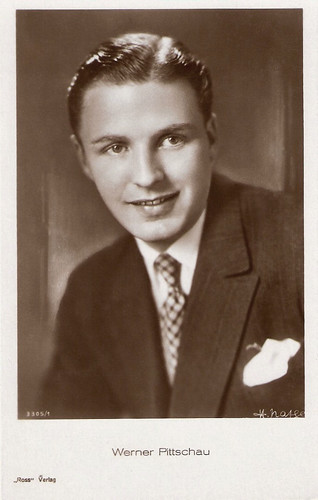
German postcard by Ross Verlag, no. 3305/1, 1928-1929. Photo: H. Natze.
Werner Pittschau had a breakthrough in the box-office hit Dirnentragödie/Tragedy of the Street (Bruno Rahn, 1927) in which Asta Nielsen starred as a prostitute.
He continued this success with a starring role in the comedy Ehekonflikte/Wedding Wars (Bruno Rahn, 1927), Die Geliebte des Gouverneurs/The Prince and the Dancer (Friedrich Fehér, 1927) opposite Magda Sonja, and another successful role in Sacco und Vanzetti (Alfréd Deésy - also credited as Alfred Kempf-Dezsi, 1927).
In 1928 the busy young actor appeared in a.o. Tragödie im Zirkus Royal/Tragedy at the Royal Circus (Alfred Lind, 1928) starring Bernhard Goetzke, Die weisse Sonate/The White Sonata (Louis Seemann, 1928) with Carla Bartheel, and Der erste Kuss/The First Kiss (Carl Lamac, 1928) with Anny Ondra.
He also appeared in the Hungarian production Mária növér/Sister Maria (Antal Forgács, 1929) and the Czech-German coproduction Známosti z ulice/ Strassenbekanntschaften/Pick-ups (Josef Medeotti-Bohác, Alwin Neuß, 1929).
After Erzherzog Johann/Archduke Johann (Max Neufeld), 1929 with Xenia Desni his promising career ended abruptly.
On 28 November 1928 Werner Pittschau was killed in a road accident in Spandau. During his much too short career he had appeared in more than 20 films.
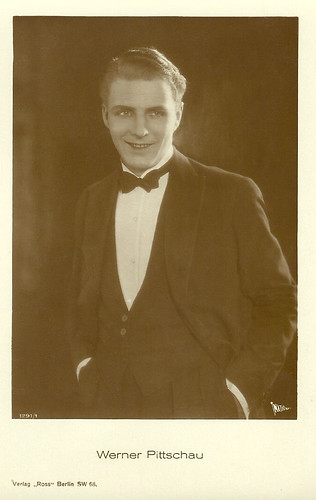
German postcard by Ross Verlag, no. 1291/1, 1927-1928. Photo: National. Collection: Didier Hanson.
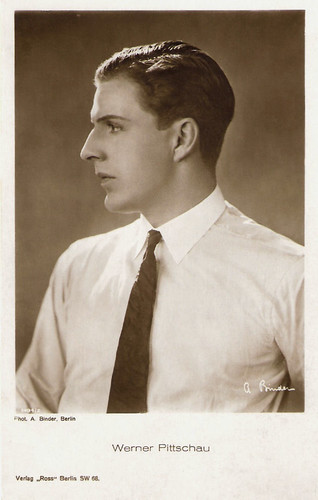
German postcard by Ross Verlag, no. 1494/2, 1927-1928. Photo: Alex Binder, Berlin.
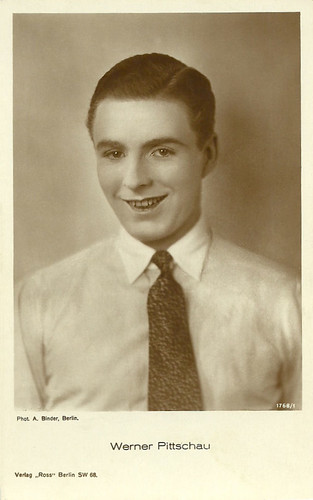
German postcard by Ross Verlag, no. 1768/1, 1927-1928. Photo: Alex Binder, Berlin. Collection: Didier Hanson.
Sources: Thomas Staedeli (Cyranos), Wikipedia (German), Filmportal.de, and IMDb.

German postcard by Ross Verlag, no. 1713/1, 1927-1928 (sent by mail in the Netherlands in 1929). Photo: Atelier Balázs, Berlin.

German postcard by Ross Verlag, no. 2057/1, 1927-1928. Photo: Alex Binder, Berlin.

German postcard by Ross Verlag, no. 3601/1, 1928-1929. Photo: Fayer, Wien.
Acting Bug
Werner Pittschau was the son of Austrian stage actor Ernst Pittschau and stage actress Hilda Pittschau-Hofer née Schützenhofer. His older stepbrother Ernst Pittschau was a well-known film actor.
After his school education Werner went to a cadet school to become an officer. When the political situation in Austria changed he chose for a commercial education.
But the acting bug was inside him and he got his first engagement at the Landestheater in Prague as a jeune premier. There he was spotted by Erika Glässner and Hans Junkermann who brought him to the cinema.
He made his film début in the German film Der krasse Fuchs/The Cool Fox (Conrad Wiene, 1925) with Hans Brausewetter.
To his other early films belong Die Anne-Liese von Dessau (James Bauer, 1925) with Valy Arnheim, the war drama Volk in Not/Nation in Distress (Wolfgang Neff, 1925) with Claire Rommer, Die letzte Droschke von Berlin/The Last Taxi of Berlin (Carl Boese, 1926) and the German-British co-production Die versunkene Flotte/When Fleet Meets Fleet: A Romance of the Great Battle of Jutland (Graham Hewett, Manfred Noa, 1926), starring Hans Albers and Nils Asther.

German postcard by Ross Verlag, no. 1494/1, 1927-1928. Photo: Alex Binder, Berlin.

German postcard by Ross Verlag, no. 1627/1, 1927-1928. Photo: Alex Binder, Berlin.

German postcard by Ross Verlag, no. 3305/1, 1928-1929. Photo: H. Natze.
Breakthrough
Werner Pittschau had a breakthrough in the box-office hit Dirnentragödie/Tragedy of the Street (Bruno Rahn, 1927) in which Asta Nielsen starred as a prostitute.
He continued this success with a starring role in the comedy Ehekonflikte/Wedding Wars (Bruno Rahn, 1927), Die Geliebte des Gouverneurs/The Prince and the Dancer (Friedrich Fehér, 1927) opposite Magda Sonja, and another successful role in Sacco und Vanzetti (Alfréd Deésy - also credited as Alfred Kempf-Dezsi, 1927).
In 1928 the busy young actor appeared in a.o. Tragödie im Zirkus Royal/Tragedy at the Royal Circus (Alfred Lind, 1928) starring Bernhard Goetzke, Die weisse Sonate/The White Sonata (Louis Seemann, 1928) with Carla Bartheel, and Der erste Kuss/The First Kiss (Carl Lamac, 1928) with Anny Ondra.
He also appeared in the Hungarian production Mária növér/Sister Maria (Antal Forgács, 1929) and the Czech-German coproduction Známosti z ulice/ Strassenbekanntschaften/Pick-ups (Josef Medeotti-Bohác, Alwin Neuß, 1929).
After Erzherzog Johann/Archduke Johann (Max Neufeld), 1929 with Xenia Desni his promising career ended abruptly.
On 28 November 1928 Werner Pittschau was killed in a road accident in Spandau. During his much too short career he had appeared in more than 20 films.

German postcard by Ross Verlag, no. 1291/1, 1927-1928. Photo: National. Collection: Didier Hanson.

German postcard by Ross Verlag, no. 1494/2, 1927-1928. Photo: Alex Binder, Berlin.

German postcard by Ross Verlag, no. 1768/1, 1927-1928. Photo: Alex Binder, Berlin. Collection: Didier Hanson.
Sources: Thomas Staedeli (Cyranos), Wikipedia (German), Filmportal.de, and IMDb.
